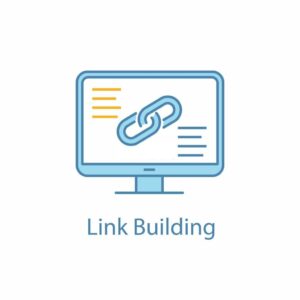1. SEO:

Search Engine Optimization (SEO) is the practice of optimizing a website to improve its visibility and ranking on search engine results pages (SERPs). It involves various techniques and strategies to attract organic (non-paid) traffic from search engines.
1.1 On-Page SEO:
On-Page SEO focuses on optimizing individual web pages to improve their visibility in search results and attract relevant traffic. It includes several key elements.
1.2 Keyword Research:

Researching and selecting relevant keywords that users are likely to search for.
1.3 Meta Tags Optimization:
Optimizing meta tags, such as the title tag and meta description, to provide concise and relevant information about the page’s content.
1.4 URL Structure Optimization:
Creating search engine-friendly URLs that are descriptive and include relevant keywords.
1.5 Content Optimization:
Creating high-quality, relevant, and engaging content that incorporates targeted keywords.
1.6 Header Tags Optimization:
Properly structuring HTML header tags (H1, H2, etc.) to highlight important sections and improve readability.
1.7 Image Optimization:
Optimizing images by using descriptive file names, alt tags, and compressing their size to improve page load speed.
1.8 Internal Linking:
Creating links within the website to connect relevant pages, improving navigation and helping search engines understand the site’s structure.
1.9 Site Speed Optimization:
Optimizing website loading speed to provide a better user experience and meet search engine performance expectations.
2. Off-Page SEO:
Off-Page SEO refers to activities carried out outside the website to improve its search engine rankings. It mainly focuses on building the website’s reputation and authority through various methods.
2.1 Link Building:

Acquiring high-quality backlinks from reputable websites to increase the website’s authority and credibility.
2.2 Social Media Marketing:

Utilizing social media platforms to promote content, engage with users, and build brand awareness.
2.3 Social Bookmarking:
Sharing and bookmarking website pages on social bookmarking platforms to increase visibility and generate traffic.
2.4 Influencer Outreach:
Collaborating with influencers or industry experts to gain exposure and reach a wider audience.
2.5 Guest Blogging:
Writing and publishing articles on other relevant websites to build backlinks and increase brand visibility.
2.6 Online Reputation Management:
Monitoring and managing the online reputation of a brand, responding to reviews, and addressing customer concerns.
3. Technical SEO:

Technical SEO focuses on optimizing the technical aspects of a website to improve its search engine visibility and crawling. It includes:
3.1 Website Structure and Navigation:
Ensuring that the website’s structure is logical, well-organized, and easy to navigate for both users and search engines.
3.2 Mobile Optimization:
Optimizing the website for mobile devices, including responsive design, fast loading speed, and mobile-friendly user experience.
3.3 Crawling and Indexing:
Allowing search engines to crawl and index the website’s pages effectively to ensure they appear in search results.
3.4 XML Sitemap:
Creating an XML sitemap that lists all the website’s pages, helping search engines understand the site’s structure and prioritize content.
3.5 Robots.txt:
Configuring the robots.txt file to control search engine crawlers’ access to specific areas of the website.
3.6 Site Architecture:
Designing a website structure that is easy to understand and navigate, promoting user engagement and search engine visibility.
3.7 Schema Markup:
Implementing structured data markup to provide search engines with additional context and information about the website’s content.
3.8 SSL and Security:
Implementing SSL (Secure Sockets Layer) encryption to secure data transmission between the website and users, improving trust and security.
4. Local SEO:

Local SEO focuses on optimizing a website’s visibility for local searches, particularly for businesses targeting a specific geographical area. Key aspects include:
4.1 Google My Business:
Optimizing and managing a Google My Business listing, including accurate NAP (Name, Address, Phone Number) information, business category, and customer reviews.
4.2 Local Directory Listings:
Ensuring consistent and accurate business information across various online directories and local listing platforms.
4.3 Online Reviews and Ratings:
Encouraging and managing customer reviews and ratings on platforms such as Google, Yelp, and industry-specific review sites.
4.4 NAP (Name, Address, Phone Number) Consistency:
Ensuring consistency of business information (name, address, phone number) across the website, listings, and directories.Local Citations:
Building citations (mentions of the business) on relevant websites, directories, and local platforms to increase visibility and improve local rankings.
5. SEO Analytics and Reporting:

SEO Analytics and Reporting involve tracking and analyzing various metrics to evaluate the effectiveness of SEO efforts and make data-driven decisions:
5.1 Google Analytics:

Using Google Analytics to measure website traffic, user behavior, conversions, and other relevant metrics.
5.2 Google Search Console:
Monitoring website performance, indexing status, and receiving alerts or insights from Google regarding the website’s visibility.
5.3 Keyword Ranking Tracking:
Tracking keyword rankings in search engine results to assess the impact of SEO efforts and identify areas for improvement.
5.4 Traffic Analysis:
Analyzing website traffic sources, user demographics, behavior flow, and engagement metrics to identify opportunities for optimization.
5.5 Conversion Tracking:
Setting up and tracking conversion goals, such as form submissions or purchases, to measure the effectiveness of SEO efforts in driving desired actions.
5.6 Performance Metrics:

Monitoring key performance indicators (KPIs) related to SEO, such as organic traffic, bounce rate, time on page, and average session duration.
6. SEO Tools:
SEO Tools are software and online platforms that assist in performing SEO tasks efficiently and effectively. Some commonly used SEO tools include:
6.1 Keyword Research Tools:
Tools like Google Keyword Planner, SEMrush, or Moz Keyword Explorer that help identify relevant keywords and assess their search volume and competition.
6.2 SEO Auditing Tools:
Tools like Screaming Frog, SEMrush Site Audit, or Moz Site Crawl that analyze a website’s technical aspects, on-page elements, and identify optimization opportunities.
6.3 Backlink Analysis Tools:
Tools like Ahrefs, Majestic, or Moz Link Explorer that help analyze a website’s backlink profile, track competitor backlinks, and identify link-building opportunities.
6.4 Rank Tracking Tools:
Tools like SEMrush, Ahrefs, or Moz Rank Tracker that monitor keyword rankings and provide insights into SERP (Search Engine Results Page) positions over time.
6.5 Competitor Analysis Tools:
Tools like SEMrush, Ahrefs, or SpyFu that help analyze competitors’ SEO strategies, keywords, backlinks, and content to gain insights and identify areas for improvement.
6.6 Content Optimization Tools:
Tools like Yoast SEO, SEMrush Content Analyzer, or Grammarly that assist in optimizing content for readability, SEO best practices, and keyword usage.
6.7 Technical SEO Tools:
Tools like Google Search Console, Bing Webmaster Tools, or GTmetrix that help diagnose and resolve technical issues, monitor website performance, and indexation status.
7. SEO Best Practices and Guidelines:
SEO Best Practices and Guidelines refer to the recommended techniques and ethical guidelines to follow when optimizing a website for search engines. Some key aspects include:
7.1 White Hat SEO:

Following ethical and approved SEO practices that comply with search engine guidelines, focusing on creating high-quality content, user experience, and long-term strategies.
7.2 Black Hat SEO:

Unethical and manipulative techniques that violate search engine guidelines, such as keyword stuffing, cloaking, link schemes, or content scraping. These can lead to penalties and deindexing by search engines.
7.3 Google Webmaster Guidelines:
Guidelines provided by Google that outline the best practices to ensure a website is accessible, indexable, and provides a good user experience.
7.4 User Experience (UX) and SEO:

Optimizing website design, navigation, and content to provide a positive user experience, as user satisfaction and engagement are important ranking factors.
7.5 Mobile-First Indexing:
Designing and optimizing websites with a mobile-first approach, as Google now primarily uses the mobile version of a website for indexing and ranking.
7.6 Voice Search Optimization:
Optimizing website content to be more compatible with voice search queries, considering conversational language and long-tail keywords.
7.7 E-A-T (Expertise, Authoritativeness, Trustworthiness):
Demonstrating expertise, authoritativeness, and trustworthiness in content and website overall to establish credibility with search engines and users.
7.8 Core Web Vitals:
Core Web Vitals are a set of specific factors related to page loading speed, interactivity, and visual stability. Optimizing these factors is important for providing a good user experience and positively impacting SEO.
This comprehensive explanation provides an overview of each topic within the SEO tree, highlighting their significance in optimizing a website’s visibility, rankings, and overall success in search engine results.




